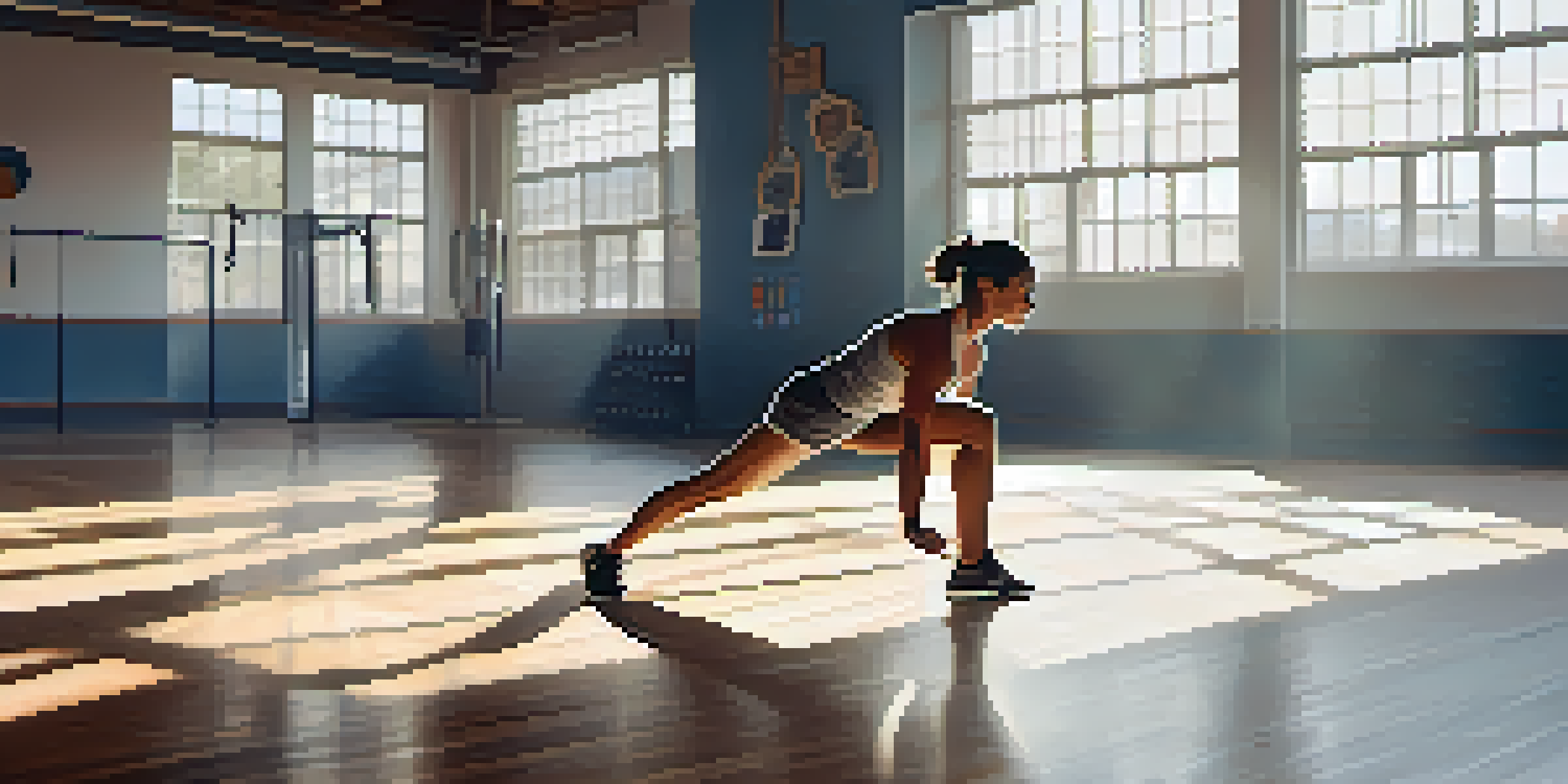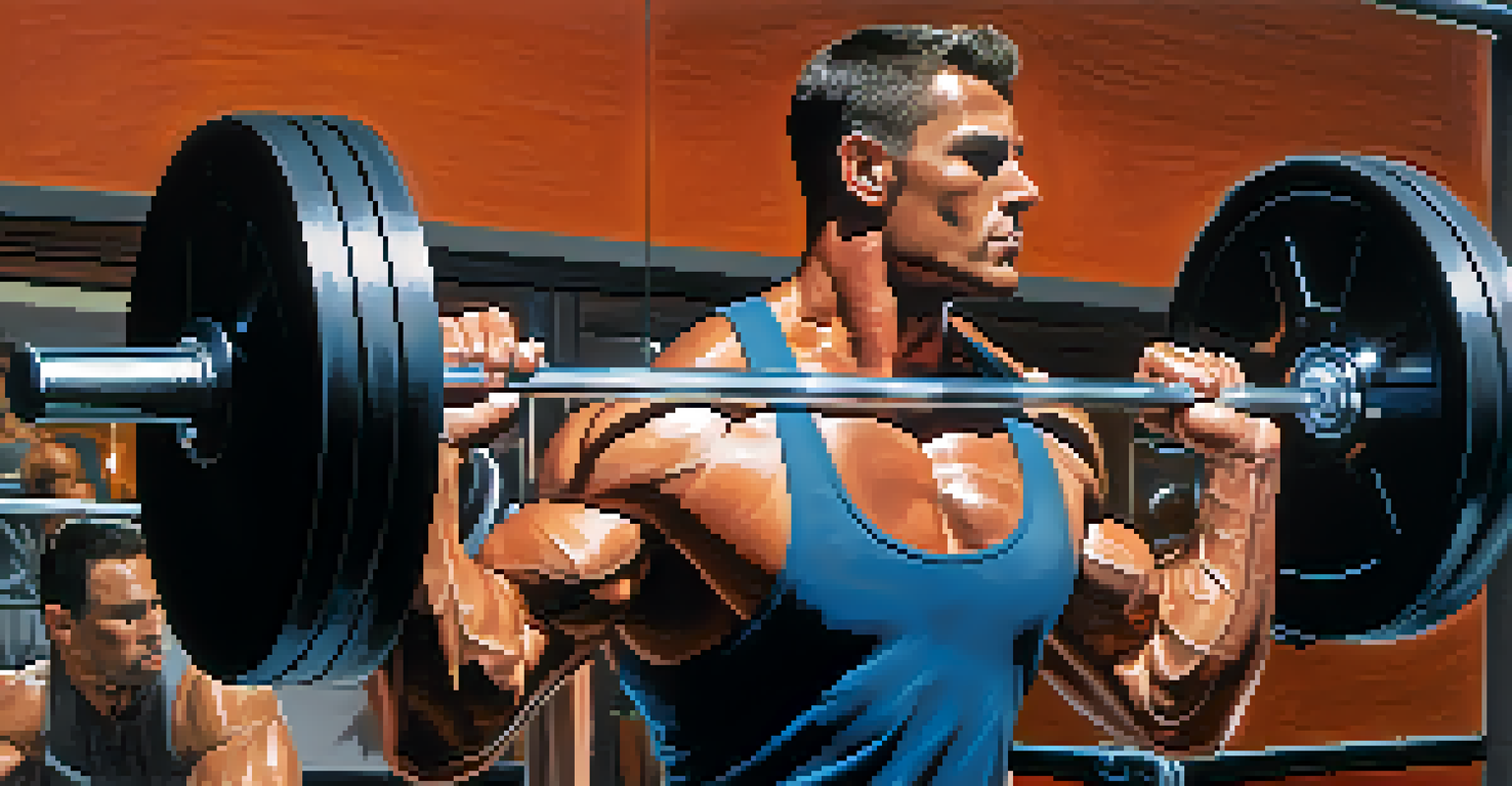Best Practices for Warming Up: A Guide for Bodybuilders

Understanding the Importance of Warming Up
Warming up is crucial for any athlete, especially bodybuilders. It prepares your body for the intense physical activity ahead, reducing the risk of injury. Think of it as prepping your car before a long drive; you wouldn’t want to hit the road without ensuring everything is in working order.
An ounce of prevention is worth a pound of cure.
A good warm-up increases blood flow to your muscles, improving flexibility and range of motion. This is key for bodybuilders who need to perform at their best during heavy lifts. By elevating your heart rate gradually, you also help your body transition smoothly into the workout phase.
Overall, a proper warm-up not only enhances performance but also contributes to long-term fitness progress. Neglecting this step can lead to setbacks, making it essential to incorporate effective warm-up routines into your training.
Dynamic Stretching: The Right Approach
Dynamic stretching involves moving your muscles and joints through their full range of motion, making it an ideal warm-up technique for bodybuilders. Unlike static stretching, which can temporarily decrease strength, dynamic stretches maintain muscle readiness.

Examples of dynamic stretches include leg swings, arm circles, and torso twists. These movements not only loosen your muscles but also activate your nervous system, preparing you mentally and physically for the workout ahead. Picture it as revving up an engine before you hit the gas.
Warming Up Reduces Injury Risk
A proper warm-up prepares your body for intense workouts, significantly lowering the chances of injury.
Incorporating dynamic stretching into your routine will enhance your overall mobility and performance during lifts. Aim for 5 to 10 minutes of dynamic stretches focused on the muscle groups you plan to work that day.
Incorporating Warm-Up Sets for Effective Lifting
Warm-up sets are a vital component of any bodybuilding warm-up routine. These sets involve lifting lighter weights before progressing to your working sets, allowing your muscles to adapt gradually to heavier loads. Think of it as a rehearsal before the main performance.
The more you sweat in training, the less you bleed in battle.
Start with a set that is about 50% of your working weight for 10 to 15 reps. This not only prepares your muscles but also helps you focus on your form, reducing the risk of injury. As you progress, gradually increase the weight until you reach your targeted lifting weight.
By incorporating warm-up sets, you're setting yourself up for a successful and safe workout. This practice helps you gauge how your body feels that day and adjust your workout intensity accordingly.
Targeting Specific Muscle Groups During Warm-Up
Tailoring your warm-up to target specific muscle groups is key for bodybuilders. Before hitting the gym, take a moment to identify which muscles you'll be working on that day. This focused approach ensures those muscles are adequately prepared for the strain they'll endure.
For example, if you're planning to do squats, include dynamic stretches like leg swings and hip circles. This will activate your glutes, quads, and hamstrings, making them more responsive during your workout. It’s like giving each part of your body a little pep talk before the big game.
Dynamic Stretching Boosts Performance
Incorporating dynamic stretches activates your muscles and nervous system, enhancing overall mobility and workout performance.
By being intentional about your warm-up, you can improve muscle engagement and overall performance. Plus, it can lead to better results in your bodybuilding journey, as your muscles will be more primed for action.
Utilizing Mobility Drills for Joint Health
Mobility drills play an essential role in warming up, especially for bodybuilders. These exercises focus on improving the range of motion in your joints, which is crucial for effective lifting. Think of it as oiling the hinges on a door to ensure it opens smoothly.
Incorporate movements like hip openers, shoulder dislocates, and wrist circles into your warm-up routine. These drills help prevent stiff joints and improve your overall performance in the gym. They also enhance your ability to execute complex movements with proper form.
Prioritizing mobility not only supports your lifting but also contributes to long-term joint health. This proactive approach can help mitigate common issues associated with heavy lifting, allowing you to continue progressing in your bodybuilding journey.
Timing Your Warm-Up: How Long Should It Be?
The duration of your warm-up is just as important as the exercises you choose. Ideally, a warm-up should last between 10 to 15 minutes, providing ample time for your body to adjust. Think of it as a gentle transition from relaxation to workout mode.
However, the exact timing can depend on various factors, such as the intensity of your workout and your individual needs. If you’re planning a particularly grueling session, consider extending your warm-up to ensure your body is fully prepared.
Warm-Up Sets Prepare for Heavy Lifts
Using warm-up sets with lighter weights helps your muscles adapt and improves focus on form before tackling heavier lifts.
Listening to your body is key. If you feel tight or sluggish, don’t rush through your warm-up; take the time you need to feel ready. This investment in time can pay off in the form of better performance and fewer injuries.
Post-Warm-Up: Transitioning to Your Workout
Once you’ve completed your warm-up, it’s time to smoothly transition into your workout. This shift is essential for maintaining the momentum you've built during your warm-up. You want to carry that energy forward into your lifting session.
Begin with lighter weights or lower-intensity exercises related to your main lifts, gradually increasing the intensity as you go. This technique keeps your muscles engaged and ready for heavier lifts, ensuring you're not jumping straight into the deep end.

By maintaining this flow, you reduce the likelihood of injury and enhance your overall performance. Remember, a good warm-up sets the tone for your entire workout, so make that transition as seamless as possible.